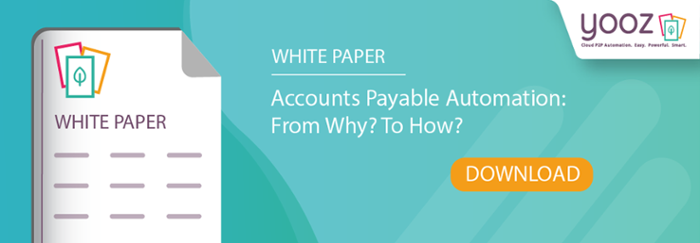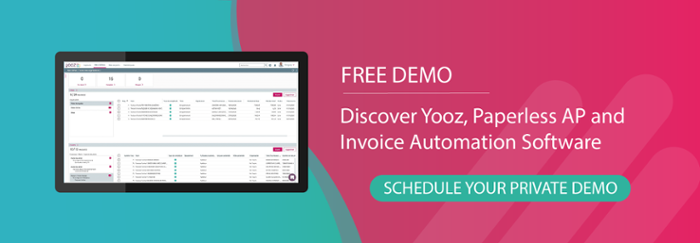Despite the many technological advances we’ve seen in the finance function, the use of robotic process automation (RPA) in accounts payable (AP) has had a significant impact on moving manual tasks to automation. However, the AP department remains an area that is in desperate need of innovation. AP teams are often called the unsung heroes of the company, but even heroes need a helping hand every now and then.
Maximizing the potential of the AP department is a complicated issue, however, many finance managers and business leaders are unsure of where to start when it comes to technology adoption and how to identify what exactly needs fixing. The AP function is too important to fail, but it doesn’t necessarily require large-scale upgrades, rip-and-replace projects, or heavy investments to find a solution.
Indeed, in the accounts payable setting, much of the focus can be narrowed down to data entry and scanning. Together these form a big part of the day-to-day role, and although attention to detail is a key characteristic of the modern accounts payable employee, humans aren’t perfect (despite what some may think!). Accounts payable automation is here, so why burden staff with the responsibility of scanning, recording, and validating invoices?
Why is RPA important for accounts payable?
Robotic Process Automation (RPA) is a technology that is helping accounts payable find its true potential simply by taking the robot out of the human. Nine out of ten businesses are said to have already implemented the technology to help with manual processes, while one in every two businesses are looking to increase the use of the technology.[1][2]
RPA, is not a brand new technology by any means, but the long-standing troubles found in areas of finance have brought new light to use cases and potential benefits of the technology for both financial and business decision-makers. You’ve also likely interacted with it in some sense already, such as if you’re using data to track shipments and deliveries or if you use a CRM platform with your website.
RPA in its most basic form simply automates certain processes that need to be performed faster, more accurately, and even safer. Closely linked to artificial intelligence (AI), RPA is the perfect tool to use on back-office and administrative processes that could not only benefit from being automated, but also have no benefit being undertaken by a human. Instead of being utilized for data entry tasks, for example, we should be freed up to provide value that a robot simply can’t such as creativity, intuition, and innovative problem-solving. This makes it nearly perfect for use in often routine accounting processes.
Certainly RPA has come under scrutiny for the threat it poses to job prospects. However, instead of taking jobs, the technology actually enhances them by providing staff with the ability to thrive in their role without being weighed down by highly repetitive, time-consuming, and labor-intensive tasks. For example, instead of logging in your timesheet every day or even scanning emails, can you imagine how much more productive you’d be if you had someone, or something, take care of this for you?
How is RPA being used in accounts payable?
Accounts payable teams could be receiving a high volume of customer invoices every month, from single digits to thousands and millions. All of these must be manually recorded (sometimes by scanning paper documents), checked against purchase order numbers and invoices, and then recorded into a system for filing and auditing purposes. One invoice might take a few minutes to process, but if there’s an issue - such as the order numbers or final costs don’t add up - it could take hours and a whole team of people to resolve matters. Not only is this error-prone, its highly time-consuming and certainly not a way of maximizing efficiency.
Although RPA is becoming increasingly popular in the accounts payable function as a means of improvement, it sometimes only scratches the surface of what could be achieved. As the accounts payable function can often throw up some complex issues, and with so much data to try and find a resolution, tools that can offer complete automation and completely remove the need for manual intervention can provide benefits that no human - or RPA alone - could ever offer.
For example, RPA can be configured to automatically process digital and paper invoices as soon as they’re received. Optical Character Recognition (OCR) technology first reads the invoice to provide the information needed for RPA to start processing and working its magic. The technology matches invoices to relevant purchase order numbers or receipts and starts to process payment - all without the need for human interaction.
But RPA alone isn’t enough to completely transform the accounts payable department. RPA is very rigid in that it is told to perform set jobs and doesn’t step outside of this area. For custom integrations or to fix uncommon scenarios, the technology and code behind it must be manually rewritten by IT teams, which can become costly and cause delays. RPA also feeds on data supplied by the accounts payable, which could add further problems if teams have created custom data fields or if information isn’t updated on a regular basis.
Only when used in conjunction with AI and machine learning can the real benefits come out to play. Together, these technologies help businesses and accounts payable departments optimize their processes and can easily scale them up or down depending on the workload. It helps staff increase overall productivity while helping them embrace a new-look role without the need for manual intervention.
What are the benefits of RPA in accounts payable?
Accounts payable teams could be receiving thousands - perhaps even millions - of customer invoices every month. All of these must be manually recorded (sometimes by scanning paper documents), checked against purchase order numbers and invoices, and then recorded into a system for filing and auditing purposes. One invoice might take a few minutes to process, but if there’s an issue - such as the order numbers or final costs don’t add up - it could take hours and a whole team of people to resolve matters. Not only is this error-prone, its highly time-consuming and certainly not a way of maximizing efficiency.
Although RPA is becoming increasingly popular in the accounts payable function as a means of improvement, it sometimes only scratches the surface of what could be achieved. As the accounts payable function can often throw up some complex issues, and with so much data to try and find a resolution, tools that can offer complete automation and completely remove the need for manual intervention can provide benefits that no human - or RPA alone - could ever offer.
For example, RPA can be configured to automatically process digital and paper invoices as soon as they’re received. Optical Character Recognition (OCR) technology first reads the invoice to provide the information needed for RPA to start processing and working its magic. The technology matches invoices to relevant purchase order numbers or receipts and starts to process payment - all without the need for human interaction.
But RPA alone isn’t enough to completely transform the accounts payable department. RPA is very rigid in that it is rules-based: it is told to perform set jobs and doesn’t step outside of this area. For custom integrations or to fix uncommon scenarios, the technology and software code behind it must be manually rewritten by IT teams, which can become costly and cause delays. RPA also feeds on data supplied by the accounts payable, which could add further problems if teams have created custom data fields or if information isn’t updated on a regular basis.
Only when used in conjunction with AI and machine learning can the real benefits come out to play. Together, these technologies help organizations and accounts payable departments optimize their processes and can easily scale them up or down depending on the workload. It helps staff increase overall productivity while helping them embrace a new-look role without the need for manual intervention.
How do you get started with RPA in accounts payable?
To get started with using RPA in the accounts payable department, financial leaders must first map out the issues, bottlenecks, and inefficiencies that are currently plaguing their businesses. This could be something as simple as speaking to accounts payable staff on their opinions on what could be improved, but it can sometimes stem from issues such as duplicate or late payments to a vendor or supplier.
There’s no arguing against the benefits that RPA and similar technologies, such as machine learning and AI, have delivered for accounts payable teams. But there are other considerations and questions that need to be addressed before finance leaders move full steam ahead. For example, will the technology work with my current technology stack, such as the ERP or finance system? Will it require a custom integration? Do staff need to be trained to use the new system?
RPA adoption in accounts payable automation is becoming more and more widespread, and it will continue to streamline and optimize even the most complex of financial processes in the future. By taking the robot out of the human, finance leaders and businesses can realize benefits that were previously unimaginable without the technology.
Want more information and tips on implementing RPA in accounts payable?








